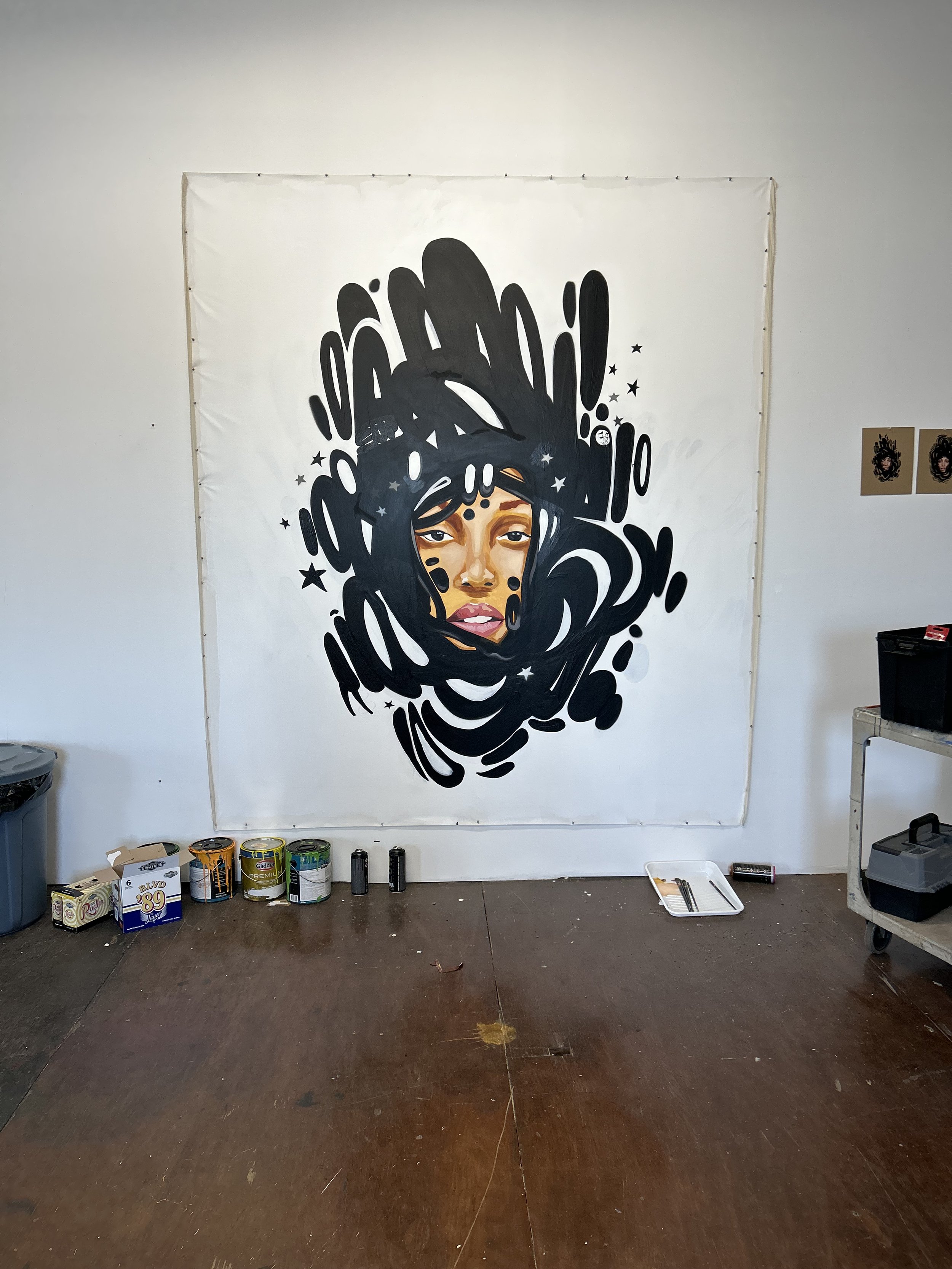Spray Paint as a Tool in the Art of JT Daniels: Sparking a Change in Conversation Through Street Art
Muralist JT Daniels is recognized for his large-scale murals and public art projects seen across Kansas City. His practice focuses on narratives representative of the urban community, and the amalgamation of overlapping faces and forms in his murals explore the complexities of the human experience.
Modern-day street art can often be looked down upon for its association to graffiti, crime, and vandalism. However, Daniels attaches a positive connotation to its use as an art form through social activism - uplifting and inspiring others in the artmaking process to demonstrate how art binds people. Using muted and bright colors to create flowing designs, he illustrates to audiences how modern-day street art is a subdivision of a culture; inviting them to view the medium through another lens to recognize its function as a conversation starter used to weave together narratives representative of a community.
In the comfort of his studio space, Daniels admits he feels “years behind” other muralists, although he has been using spray paint in his practice as the medium works best on a number of surfaces of an exterior wall. He explains he took lessons from muralists Jose Faus and Alicia Gambino when first painting on walls – a mural team that painted many historical murals around the city, one being “Anthology of Argentine Mural” located on 30th and Woodland.
As Faus mentored Daniels in college and taught him how to enlarge his images, Gambino got him into the mural world where she taught him how to budget and communicate with city councils.
Even so, Daniels did not grow up immersed in the culture of graffiti but educates himself on the art form and asks questions on its use as a public tool.
“Not everyone that uses spray paint is trying to damage or exact your opinion but trying to make their voice heard,” Daniels explains. “There’s a lot of people that do it in a way where they communicate very efficiently. Sometimes it’s in a way that not everyone likes. I’ve run into a lot of people that don’t like the fact that you use spray paint but they like the overall image, and you’re like, “Hey, you know what? That mural that you like right there. That was made with spray paint [...].”
The intertwining caricatures in his illustrations explore his interactions with people amongst a shared space. Elements that Daniels applies in his art to reflect these encounters include black and white designs, figures that interweave into one another, and acronyms that encapsulate the urban community of the greater metropolitan area, such as SUP (Surviving Under Pressure) and YEP (Young Empowered People).
“As a muralist, I really understand that I am not the main character here,” Daniels states. “I’m really just kind of walking around and I’m picking from everyone else’s narratives […] and how do they all interact with one another?”
Hence, the testimonies he preserves through his work capture how the experiences of multiple identities are brought together in unity regardless of classicism, ethnicity, and socio-economic position. Anyone can find themselves being represented based on the situations they are dealing with. In essence, his murals convey how we as humans try our best to survive in order to prosper within our communities to sustain a viable life that can empower others to keep on living.
And with community often at the center of his work, Daniels feels gravitated towards depicting things directly around him. On creating a public mural for a community-based project, Daniels says “When it comes to public work, like the actual mural work, it only works when the community accepts it. So, if they don’t accept it then it needs to be redone or we gotta rework it, especially if the community is involved […].”
Audiences can expect to find him creating narratives of what it is like to survive under pressure in different communal areas in his new-line of work this upcoming fall. At the moment, he has three sketches in-progress where he will be focusing on shared spaces but told from his own perspective, such as a bus stop, church pew, or a school drawing table.
“If I had to sum it up, it’s like, talking about the community but from my own perspective, my own experiences. Which is something I don’t really do.”
Each artist-in-residence at Studios Inc culminates their residency with a solo exhibition towards the end of their three year residency. For his solo exhibition (expected to take place in 2026), Daniels is interested in making something that is experimental and includes at least one or two three-dimensional elements which will allow audience members to walk into or around. The idea he has in mind involves a bus stop with overlapping people inside - either depicted through sculpture, video projection, cardboard figures, or painting.
We at Studios Inc look forward to seeing what Daniels dreams up during his residency for his immersive solo exhibition!



